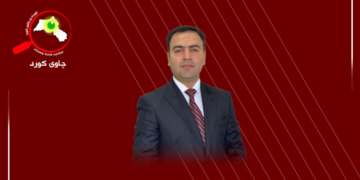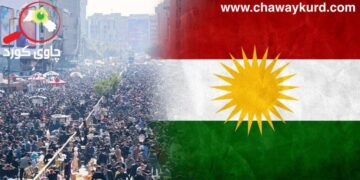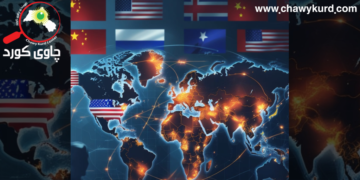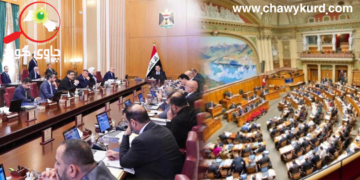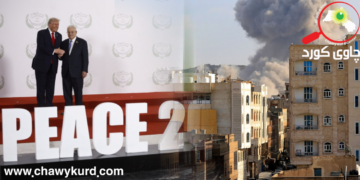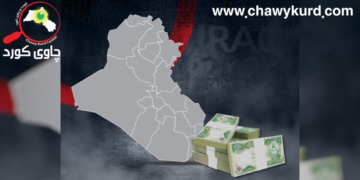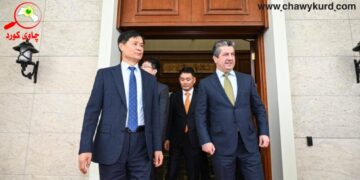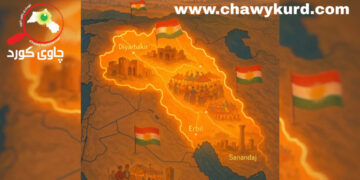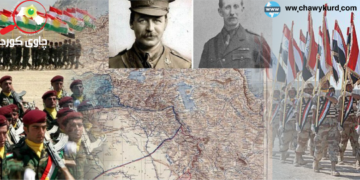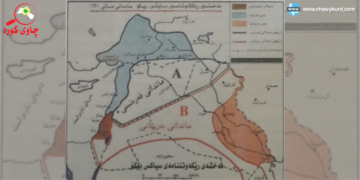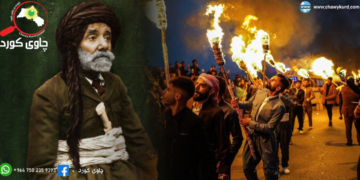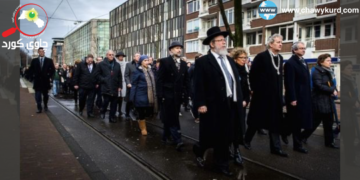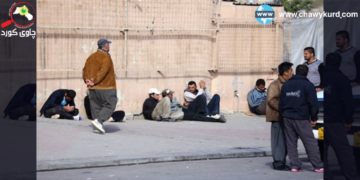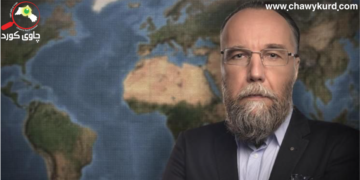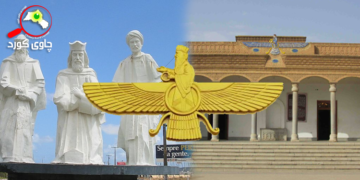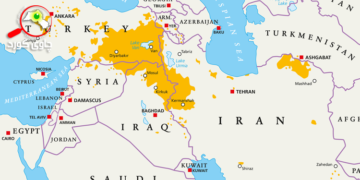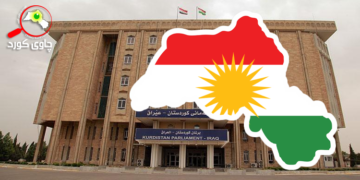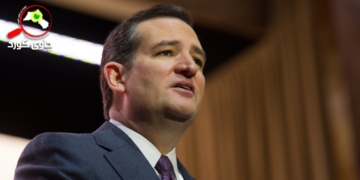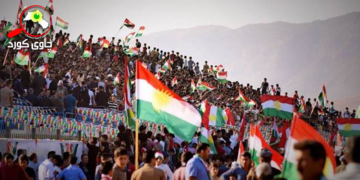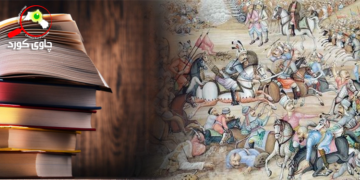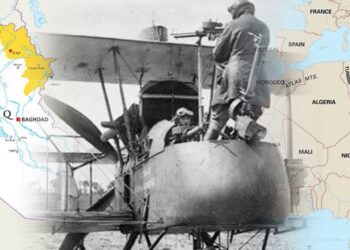In January 2020 Trump ordered the killing of Muhandis and Soleimani, more than two years after the US had not heeded the warning of Erbil about their advance on Kirkuk.
Among the people in the world who have suffered the most under the Trump administration are Kurds in the Middle East. A vast nation of people stretching across Iran, Turkey, Syria and Iraq, the Kurds have historically suffered discrimination in the states they live in and have often been betrayed by Western countries that promised one set of values but often collaborated with authoritarian regimes in the region.
But the last several decades brought hopes of change. In the last days of the Obama administration, Kurds found themselves at a peak of influence in a region that was suffering from destabilization and terror.
The reasons that brought Kurds to influence on the eve of the Trump administration are varied. It wasn’t all good news. In Turkey, a breakdown in a ceasefire between the government of Recep Tayyip Erdogan and the Kurdistan Workers Party led to curfews in Kurdish cities and the razing of whole Kurdish neighborhoods in a crackdown. Similarly in Iran, Kurds suffered under the regime.
In Iraq, Kurds in the autonomous Kurdistan Region of Iraq had created a thriving economy and stable area, amid the difficulties of the ISIS war and budget cuts from Baghdad. When Baghdad’s army had fled from ISIS, the Kurdish Peshmerga, the armed forces of the autonomous region, came to control areas from Sinjar on the border with Syria to Kirkuk, between the regional capital of Erbil and Baghdad. These are areas that were disputed historically between the Kurdish region and Baghdad. Influential Kurds like Governor Najmaldin Karim governed Kirkuk for years as Baghdad was in chaos.
In Syria, the Kurds had suffered under the Assad regime, often lacking basic rights like citizenship. However, after the Syrian Civil War began in 2011, they received rights and were able to organize. They helped push ISIS back in 2015 and partnered with the US-led anti-ISIS coalition.
By 2016 this successful partnership had become phenomenal. Thousands of Kurds died fighting ISIS, but they were able to secure and stabilize most of eastern Syria.
UNDER THE Obama administration, Kurds had generally benefited. This was not only due to the key role that anti-ISIS envoy Brett McGurk played, but also because they offered the US an arc of stability in eastern Syria and northern Iraq. The US helped fund the Peshmerga and train and equip them through the Kurdistan Training and Coordination Center in Erbil.
In addition, US acting Assistant Secretary of Defense Elissa Slotkin signed a memorandum of understanding with the KRG in 2016 to help the region pay Peshmerga salaries. Millions in support flowed from Washington.
The Kurds in Syria and Iraq, sometimes called Rojava and Bashur, referring to southern and western Kurdistan, had high hopes for increasing their key role under the Trump administration.
US President Donald Trump was supposed to be an unorthodox president, not tethered to the usual establishment view in US leadership circles that had spent a century working closely with mostly Sunni Arab leaders, often preferring either Arab nationalists, monarchists or even political Islamist parties, to working with minority groups like Kurds.
US foreign policy is generally contradictory in that it talks about human rights and values but almost always betrays those values abroad. The US has generally been silent when Kurds suffered genocide, such as under Saddam Hussein.
What the Kurds didn’t know was that Trump viewed the region as “blood-stained” and an area of wasteful, endless wars. He also wanted transactional diplomacy.
Poor Kurds who didn’t have a lot of resources couldn’t pay the billions for US defense that states in the Gulf or South Korea would be pressed to pay. The US administration that came to power in January 2017 was brutal in its view of the world. Minorities and refugees didn’t matter. What mattered was profit and “America first.”
Kurds in northern Iraq gambled in September 2017 on an independence referendum. They argued that Baghdad had violated its constitutionally mandated obligations and wanted to show how deep support for independence was. US officials cautioned the region.
Baghdad reached out to Turkey and Iran to isolate the Kurds. Iran sent IRGC Quds Force General Qasem Soleimani to plan how to divide the Kurds after the referendum. Soleimani and allies in Baghdad, such as Hadi al-Amiri of the powerful Badr Organization and Abu Mahdi al-Muhandis, deputy of the Popular Mobilization Units, pressed to have Baghdad take Kirkuk from the Kurdish region as punishment for the referendum.
Haider Abadi, who was close to then-US National Security Advisor H.R. McMaster and who knew US Secretary of Defense James Mattis, planned to use the US-trained Iraqi army to retake Kirkuk. He coordinated with US officials, telling them that a secret deal had already been worked out.
In the meantime Kurdistan Regional President Masoud Barzani of the Kurdistan Democratic Party, having just mourned the passing of his one-time rival Jalal Talibani of the Patriotic Union of Kurdistan, met with the PUK at Lake Dokan to try to deal with Baghdad’s threats. The US, having cautioned Erbil against the referendum, was giving Barzani the cold shoulder. Trump wasn’t going to ride to the rescue.
INSTEAD WHAT happened is that Muhandis, Amiri and Soleimani presented the Kurds with a demand to withdraw, and if they didn’t, they would be attacked by the pro-Iranian PMU of Shi’ite militias. Chaos unfolded in Kirkuk and some 100,000 Kurds fled the advance of pro-Iranian militias and Iraq’s army.
Kurds begged the US for support. They thought Washington would intervene to stop the pro-Iranian groups from controlling one of Iraq’s key cities and expelling Kurds.
But the Trump administration didn’t care. In January 2020 Trump ordered the killing of Muhandis and Soleimani, more than two years after the US had not heeded the warning of Erbil about their advance on Kirkuk. In December 2019 a US contractor was killed in K-1, previously a Kurdish controlled base now threatened by Iranian-backed militias. In response, the US launched airstrikes on pro-Iranian militias, two years too late for the Kurds.
Many Kurds thought the fall of Kirkuk, and the militia occupation of Sinjar at the same time, was a disaster. But it was only the first disaster of the Trump administration.
In January 2018, Turkey decided to invade the Kurdish region of Afrin in Syria. This area was run by the People’s Protection Units (YPG), a key component of the US-backed Syrian Democratic Forces. However Afrin was its own isolated area in northwest Syria. While the US was working in eastern Syria, the YPG in Afrin were left to self-govern a peaceful, bucolic region.
Turkey wanted to punish the US for backing the SDF. Ankara accused the US of backing Kurdish “terrorists” in eastern Syria. But Turkey wasn’t ready to attack Americans who were embedded with the SDF in eastern Syria. Instead, Turkey decided to punish the Kurds in Afrin for the US role in eastern Syria.
Kurds begged the US to stop the invasion of Afrin. They got a cold shoulder from the Pentagon and US State Department, both of which said that America had no mandate to defend Afrin. US officials quietly told the Kurds that if they sacrificed Afrin, the US would stop further attacks in eastern Syria.
The YPG asked the Syrian regime to stop the attack on Afrin but the Syrian regime’s Russian ally signed a deal with Ankara that Turkey would get Afrin in return for the Syrian regime being allowed to retake southern Syria and other areas.
TURKEY WOULD use Afrin as a test case for its newly formed Syrian National Army, a union of Syrian rebel groups, most of which were increasingly sectarian extremist groups. Ankara wanted to shift the Syrian rebels from fighting Assad to fighting the Kurds so that Turkey could get rid of Kurdish groups in Syria. By empowering Syrian rebels to fight Kurds, the Turkish regime could cut a deal with Russia for other parts of Syria, as it would with a September 2018 deal over Idlib.
Turkey’s invasion began in January as Syrian rebel groups were urged to attack Kurds. By March, 160,000 Kurds had been ethnically cleansed from Afrin. Today the area is occupied by Turkey and extremist groups. Women are kidnapped every week in the region and held in secret prisons. Christians and Yazidi minorities have all been expelled from Afrin, their graves and places of worship vandalized. CENTCOM indicated that the chaos of the Afrin war harmed the anti-ISIS campaign because of tensions between Turkey and the SDF.
The tally by March 2018 was 260,000 Kurds expelled from Afrin and Kirkuk. But worse was to come. Trump and his Secretary of State Mike Pompeo brought in a new team of people to deal with Syria in the summer of 2018. James Jeffrey would work with other key figures such as Joel Rayburn and William Roebuck on Syria issues and the anti-ISIS war.
Trump also formed a close relationship with Turkey’s increasingly extremist and authoritarian leader Erdogan. In December 2018, Erdogan demanded the US leave Syria, so that Turkey could cleanse the remaining Kurds of the country. Trump agreed. McGurk and Mattis resigned.
This set in motion nine months of uncertainty as US commanders scrambled to keep the US in eastern Syria and not betray Kurdish partners who had liberated Raqqa and beaten ISIS. It didn’t work. US National Security Advisor John Bolton witnessed Trump’s behavior at this time and described him in his book as not being sympathetic to the Kurds. Trump appeared to be America’s first anti-Kurdish president.
BY OCTOBER 2019, Erdogan’s constant threats and phone calls resulted in the US giving Ankara the green light to attack US partners on the ground. The operation began by Turkey giving Syrian extremists the location of Kurdish civilian activists to be targeted.
Hevrin Khalaf, head of the Future Party, a young Kurdish woman who believed the US would stay and stabilize eastern Syria, was hunted down by Turkish-backed extremists who waylaid her vehicle in Syria. She was pulled from her vehicle and shot down, unarmed, as Turkish backed extremists cheered and stomped her lifeless body.
The murder of Khalaf was only the beginning. Some 200,000 Kurds were forced to flee Turkey’s attacks in October 2019. Christians were targeted for ethnic cleansing as well in the area Turkey occupied around Tel Abyad. Jihadists and extremists were told they could loot and destroy everything they found. Ankara signed a deal with Moscow to partition the area and Syrian regime troops arrived in formerly SDF-held areas from Manbij to Kobani and Qamishli.
It was a strange experience for US soldiers on the ground, asked to withdraw from areas like Kobani where the US had first intervened to help desperate Kurds fight ISIS, now seeing their allies being butchered and forced from their homes by people shouting the same slogans ISIS had once shouted.
By November 2019, a total of almost 500,000 Kurds had lost their homes or saw their lives turned upside down under Trump: first in Kirkuk, then Afrin and now northern Syria. This was a major reversal from January 2017 when they had hopes the US would invest, protect and stabilize areas they had liberated or protected from ISIS. The US has often stood by in history as various regions of the world are ravaged, but it has less rarely enabled pro-Iranian militias and extremists to attack US partners.
THE TRUMP administration abdicated responsibility. Trump didn’t even consult with US allies such as France and the UK about announcing chaotic withdrawals from parts of Syria. The administration did nothing to stop the attacks on Kirkuk, Afrin or Tel Abyad.
There was no systematic whole-of-government policy approach. While the State Department had one policy in Iraq and Syria, US Central Command had a different one.
For instance, in August and September 2019, prior to the White House speaking to Erdogan and withdrawing, Washington set up a coordination group to assure Turkey there were no threats from SDF-controlled areas. While Central Command did one thing, the US State Department officials told Ankara something else, working with it on maps of areas that Kurds would be removed from. There was no pretense that the US would make sure human rights would be guaranteed in Turkey’s occupied areas.
There are still questions about how easily Turkish-backed militias tracked down and murdered Hevrin Khalaf. It appears she was on a kill list provided by Turkey to Arab militias they sent to Syria. Ankara knew she presented a young, peaceful, woman-led face to politics in Syria. Turkish-backed extremists only allow men to run the areas Turkey occupies. Women like Khalaf and Kurds were a threat. Women have often been the central target of Turkey’s jihadists in Syria, kidnapping, raping, and murdering them.
Trump’s administration of the last four years has led to many questioning US commitments in Iraq and Syria. The betrayal of US partners and friends, disrespect for human rights and a perception that America works with authoritarian regimes to enable ethnic cleansing of peaceful areas where people had helped the US defeat ISIS, has led many to wonder why anyone in the Middle East would partner with the US.
While Iran, Russia, Turkey and other countries appear to be consistent in backing partners and allies, the US role over the last years has left a lack of confidence in Washington. For Kurds, it has been an unmitigated disaster in which their key partner and ally behaved in a chaotic and inconsistent manner.
Now, as the Biden administration takes shape, the role of experienced people such as McGurk brings back some legacies to the region. The question many wonder in Erbil and eastern Syria is what can be salvaged after so much destruction in the last several years.
Kurds worked hard to secure Kirkuk, Afrin and eastern Syria, working with other religions and ethnicities, from Arabs to Christians and Yazidis, but they saw much of the stability threatened and an unreliable or inconsistent policy in Washington.
Seth J. Frantzman
Executive director of the Middle East Center





